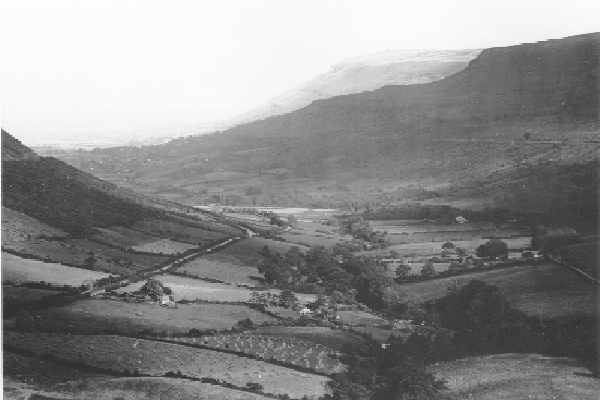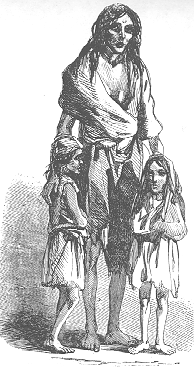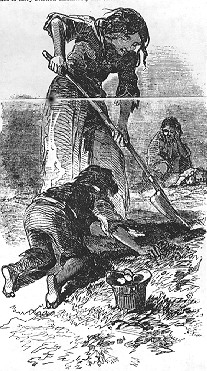




It began with a blight of the potato crop that left acre upon acre of Irish
farmland covered with black rot. As harvests across Europe failed, the price of
food soared. Subsistence-level Irish farmers found their food stores rotting in
their cellars, the crops they relied on to pay the rent to their British and
Protestant landlords destroyed. Peasants who ate the rotten produce sickened and
entire villages were consumed with cholera and typhus. Parish priests desperate
to provide for their congregations were forced to forsake buying coffins in
order to feed starving families, with the dead going unburied or buried only in
the clothes they wore when they died. 
Landlords evicted hundreds of thousands of peasants, who then crowded into disease-infested workhouses. Other landlords paid for their tenants to emigrate, sending hundreds of thousands of Irish to America and other English-speaking countries. But even emigration was no panacea -- shipowners often crowded hundreds of desperate Irish onto rickety vessels labeled "coffin ships." In many cases, these ships reached port only after losing a third of their passengers to disease, hunger and other causes. While Britian provided much relief for Ireland's starving populace, many Irish criticized Britain's delayed response -- and further blamed centuries of British political oppression on the underlying causes of the famine.

The Irish Famine of 1846-50 took as many as one million lives from hunger and disease, and changed the social and cultural structure of Ireland in profound ways. The Famine also spurred new waves of immigration, thus shaping the histories of the United States and Britain as well.
The combined forces of famine, disease and emigration depopulated the island;
Ireland's population dropped from 8 million before the Famine to 5 million years
after. If Irish nationalism was dormant for the first half of the
nineteenth-century, the Famine convinced Irish citizens and Irish-Americans of
the urgent need for political change. The Famine also changed centuries-old
agricultural practices, hastening the end of the division of family estates into
tiny lots capable of sustaining life only with a potato crop.
